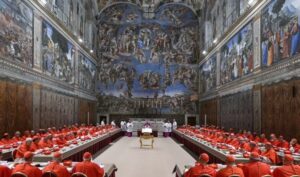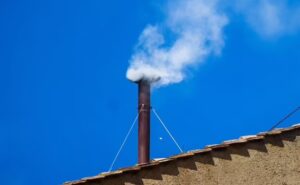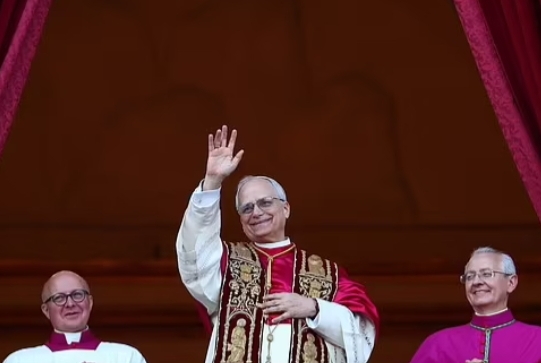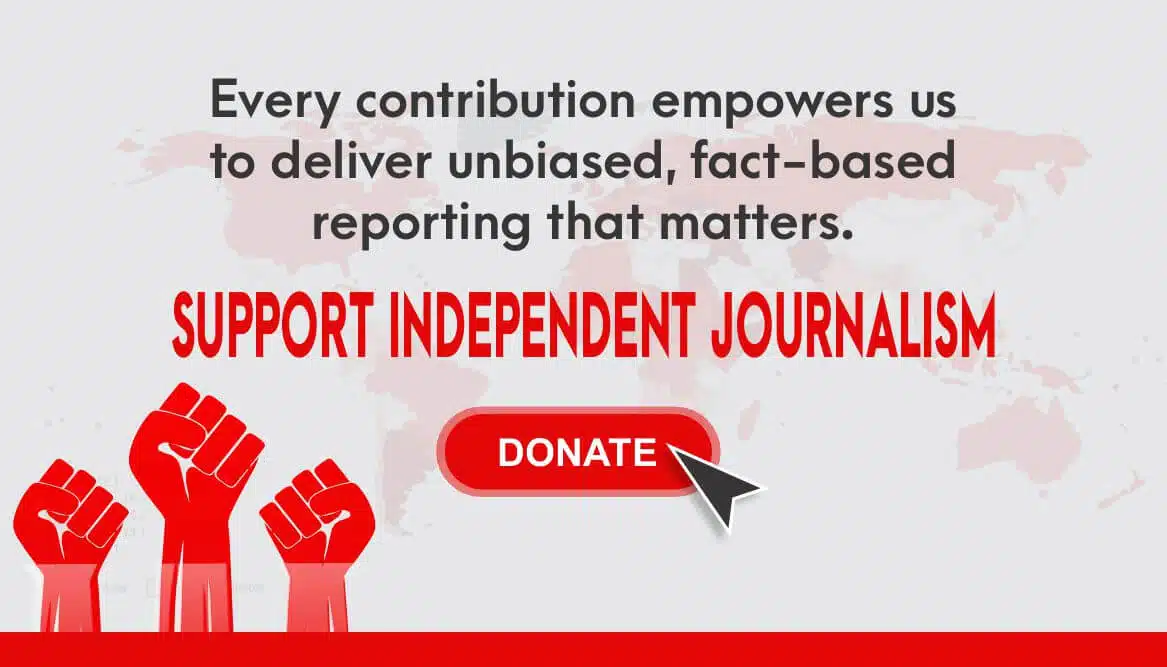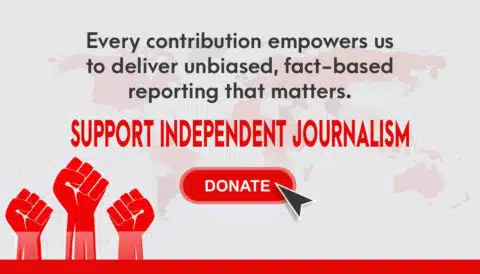By Izunna Okafor, Awka
Robert Prevost has been elected the 267th pope of the Catholic Church, taking the name Pope Leo XIV. Following two days of voting behind closed doors in the Sistine Chapel, white smoke billowed over St. Peter’s Basilica shortly after 5 p.m. UK time on Thursday, signaling to the faithful that a new pontiff had been chosen.
Cardinal Giovanni Mamberti stepped onto the central loggia of St. Peter’s Basilica to deliver the long‑awaited announcement, proclaiming in Latin, “Habemus papam!” The declaration was met with thunderous applause and chants of “Leon, Leon” from the crowd gathered in St. Peter’s Square. Many watchers appeared astonished, some mouthing in disbelief, “An American?”
Robert Prevost, known to friends and colleagues as Father Bob, becomes the first pope from the United States in the two‑millennium history of the Catholic Church. His election marks a milestone for American Catholicism, reflecting the Church’s growing global diversity and the increasing influence of the New World in Vatican affairs.
In his inaugural greeting, Pope Leo XIV offered a simple yet profound message: “Peace be with you.” He called for fearless dialogue and mutual respect among all people, underlining his commitment to continuing the bridge‑building efforts championed by his predecessor, Pope Francis.
Recalling his roots as an Augustinian priest, Pope Leo XIV emphasized that above all he is a Christian and a bishop, “so we can all walk together.” His words underscored a theme of unity that observers say will define his papacy.
He delivered his address first in Italian, the working language of the Vatican, then switched to Spanish. The pontiff fondly remembered his years as a missionary and later archbishop in Chiclayo, Peru, where he earned a reputation for pastoral care and grassroots outreach.
Observers describe the new pope as the “least American of the Americans”—a nod to his low‑key style, deep humility and preference for service over spectacle. His decade in Latin America earned him strong support among Latin American cardinals, as well as respect from his North American peers.
Despite his warm popularity, Pope Leo XIV has remained discreet on divisive issues such as the ordination of women and same‑sex unions. Insiders say he prefers to focus on pastoral outreach, social justice, and the day‑to‑day needs of parishioners rather than embroil the Church in contentious debates.
Vatican analysts suggest his reticence may be a strategic choice, allowing him time to build consensus before tackling the most divisive questions facing the Church. His reputation as a silent reformer suggests he may pursue change gradually, through quiet diplomacy rather than headline‑grabbing pronouncements.
During the conclave, Prevost was reportedly a compromise candidate who appealed across regional and ideological lines. Cardinals seeking continuity with Pope Francis’s emphasis on the peripheries found in him a like‑minded shepherd; those wary of sweeping reform saw in him a cautious guardian of tradition.
The voting process in the Sistine Chapel spanned four ballots over two days. On the final ballot, Prevost secured the required two‑thirds majority, sending the College of Cardinals into joyful celebration. The white smoke that followed was thicker and purer than in past elections, Vatican experts noted—a possible symbol of the unity achieved in his selection.
In choosing the name Leo XIV, the new pope invokes a legacy of strong leadership. The name Leo, meaning “lion,” recalls past pontiffs who guided the Church through turbulent times. By adopting this name, Pope Leo XIV signals his readiness to lead with courage and conviction.
Reactions poured in from around the world. President Joe Biden, the second Catholic president of the United States, congratulated the new pope, hailing his election as “a moment of pride for American Catholics and a beacon of hope for believers everywhere.” Leaders of other faiths also extended their greetings, noting the global significance of an American pontiff.
Catholic communities in the United States greeted the news with elation. In New York City, parishioners at St. Patrick’s Cathedral erupted in joy when the announcement was broadcast on outdoor speakers. Many held signs reading, “Welcome, Holy Father,” and “Proud to be American Catholics.”
In Chiclayo, Peru, where Prevost served for more than a decade, parishioners celebrated with street processions and prayers of thanksgiving. Local newspapers ran special editions commemorating the rise of their former archbishop to the papacy.
Vatican City is now preparing for the formal inauguration Mass, expected to take place in St. Peter’s Square within two weeks. Plans include a focus on interfaith prayer, outreach to the poor, and a reaffirmation of the Church’s commitment to environmental stewardship—areas closely identified with both Pope Francis and Cardinal Prevost’s past ministry.
As Pope Leo XIV begins his ministry, the world watches to see how the first American pope will balance tradition and reform, unity and diversity, faith and dialogue. His election opens a new chapter in the 2,000‑year history of the Catholic Church—one defined by unprecedented American leadership at its helm.
What you need to know about the new Pope:
Robert Prevost—now Pope Leo XIV—is the 267th pontiff of the Roman Catholic Church and the first ever from the United States. He was born Robert Anthony Prevost on April 12, 1955, in St. Louis, Missouri, the eldest of five children in a devout Catholic family. His father was a high‑school teacher and his mother a nurse; both instilled in him a strong sense of service and faith.
After graduating with a bachelor’s degree in philosophy from Saint Louis University in 1977, Prevost entered the Augustinian seminary in Villanova, Pennsylvania. He was ordained to the priesthood in 1983 and soon volunteered for missionary work in Latin America. He spent the next twelve years in Peru, serving remote parishes around Chiclayo, where he built schools, organized healthcare clinics, and learned Spanish and Quechua to minister effectively to indigenous communities.
In 1995, he earned a licentiate in sacred theology from the Pontifical University of St. Thomas Aquinas (Angelicum) in Rome. Returning to Peru, he was appointed auxiliary bishop of Chiclayo in 2000 and then archbishop in 2005. His decade as archbishop was marked by a low‑key, hands‑on style: he visited every parish on foot or by bus, opened food‑security programs, and quietly negotiated the release of kidnapped villagers during a flare‑up of local unrest.
Elevated to cardinal in 2016 by Pope Francis, Prevost served on the Congregation for the Evangelization of Peoples and the Pontifical Council for Promoting Christian Unity. He gained a reputation as the “least American of the Americans”—deeply shaped by Latin America, yet able to bridge cultures. He captained the Vatican’s tennis team, earning the nickname “Father Bob,” and was known for informal evening prayer sessions with young religious and seminarians.
Within the College of Cardinals he was prized for his diplomatic calm, pastoral sensitivity, and ability to listen. He rarely gave media interviews and has kept his views on hot‑button issues—women’s ordination, same‑sex unions—deliberately private. Insiders describe him as a silent reformer: someone who lets actions, not words, drive change.
Today, May 8, 2025, after four ballots over two days in the Sistine Chapel conclave, Prevost secured the required two‑thirds majority. White smoke curled above St. Peter’s Basilica at 5:07 p.m. UK time, and the crowd erupted in chants of “Leon, Leon.” From the central loggia, he appeared as Pope Leo XIV and greeted the world with “Peace be with you,” calling for fearless dialogue and unity.
This reporter, Izunna Okafor, gathered that the choice of the name Leo XIV—“lion”—evokes bold leadership amid challenges. He immediately spoke in Italian, then Spanish, recalling his missionary years and inviting all Christians to “walk together.” Vatican analysts say his background uniquely positions him to continue Pope Francis’s outreach to the margins while quietly strengthening the Church’s structures.
As Pope Leo XIV prepares for his inauguration Mass in St. Peter’s Square, attention turns to how this first American pontiff will shape the Church’s future—balancing tradition and renewal, North and South, contemplation and action. His life story—from St. Louis classrooms to Peruvian villages to the world’s highest pulpit—signals a papacy defined by service, humility and bridge‑building.


